Today, most islanders and visitors think of Nantucket and historic preservation simultaneously; they go together—hand in hand—but the reality is that historic fabric continues to be lost on island to insensitive renovation. Nantucket’s very success as a significant historic place threatens the resources we thrive to protect and that helps set us apart from mainland communities.
The Nantucket Preservation Trust’s role as stewards and advocates of the island’s rich architectural heritage is to further preservation education and to encourage the protection of our historic resources. It is our hope that all of us will think of historic properties as art objects—one-of-a-kind treasures that through a mix of luck and love have survived. In order to truly save our island’s historic resources, we all need to value and appreciate not only the exteriors of historic buildings, but the quirks and flaws in the interiors that make them different and give them character. And we all need to encourage patching, repairing and recycling instead of, gutting, replacing and wasting building materials.
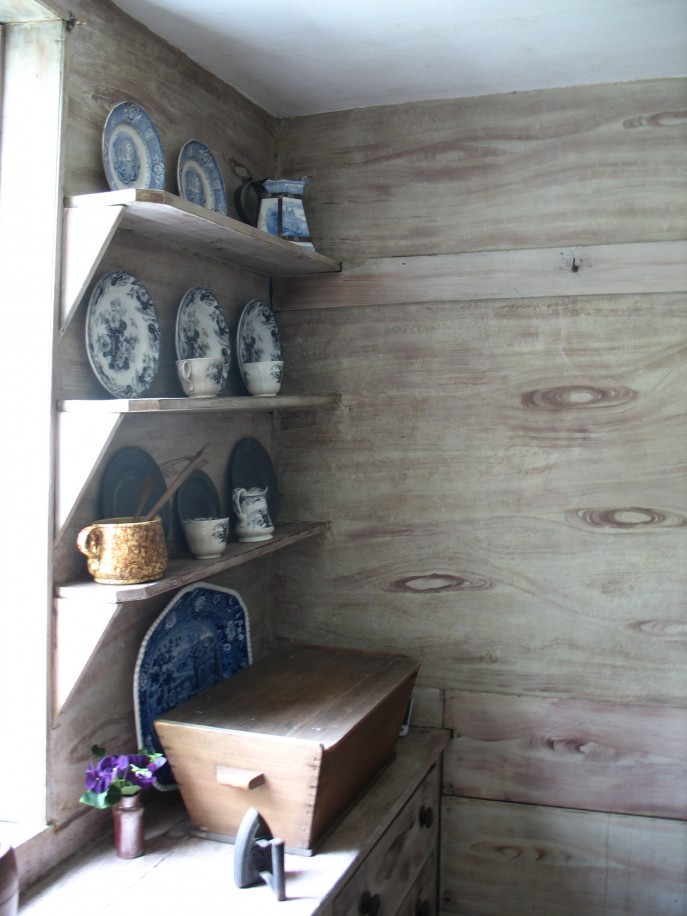
Maria Mitchell’s birthplace; photo by Michael May
You don’t need to be a preservationist to know our historic buildings are important. All you have to do is look around and it becomes quite clear that historic preservation is a vital part of the island community and economy. Nantucket’s concentration of historic architecture has for the past 150 years set the island apart from communities on the mainland—drawing visitors from far and wide. Visionaries like Walter Beinecke Jr. knew that the tourism industry would boom as long as we protected these resources. Using historic preservation as a tool—tourism became the life blood of the local economy, and although some forget–it remains so even today.
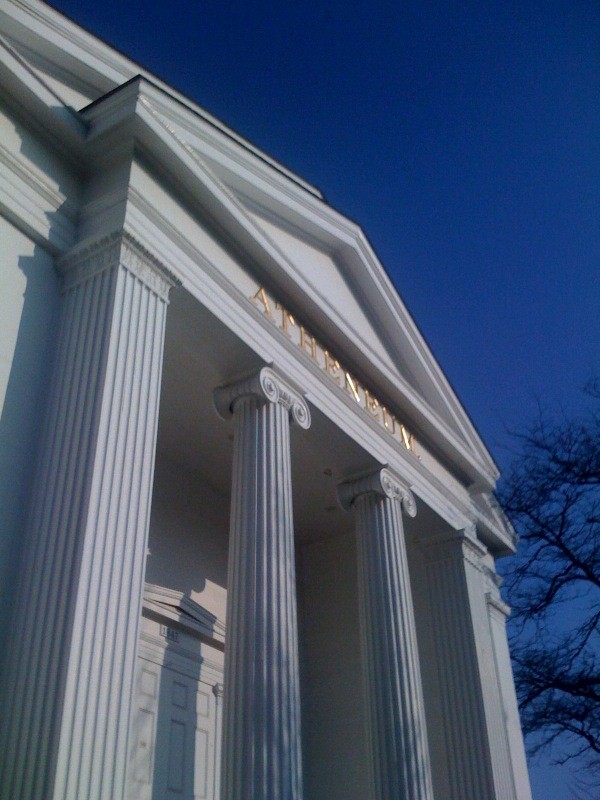
Nantucket Atheneum Public Library; photo by Michael May
Some of us may not realize that the historic charm of the island is also a key reason for having some of the highest real estate values in the nation. And a key reason for Nantucket retaining its charm is that we have regulations that protect our built environment. These regulations have played a critical role in protecting resources and also ensuring quality work for our island designers, architects, and others with a connection to the building trades.
It is shortsighted to think of our preservation regulations as obstacles. Anyone who loves Nantucket should recognize that our historic resources are of equal importance to those of our environmental and should be equally protected, just as we protect our harbor, wetlands, and beaches.
Over the past decade it has become clear that regulation alone is not the only answer. Too many of the interior elements of our historic houses are being thoughtlessly destroyed. Those elements give character and integrity to historic architecture and should be maintained. Moreover they remain a critical part of our economic success as a whole as well as retaining the value of an individual house over time. Removing significant interior features destroys a direct connection to our past and the link to the future. Unfortunately, Nantucket is slowly losing that tie—house by house. We need to work together—builders, homeowners, local government, downtown businesses, realtors, and preservationists—to make ethical decisions that protect these resources.
Preserving a building’s important features inside and out (not just its shell) as well as its landscape and street context, ensure its economic value. An analogy to how we should treat a historic building is found in how we now look at a fine antique. Not too long ago fine antiques were often stripped of their original patina—purportedly to make them fresh and clean—for short-term profit. Today, the long-term value of such a piece is drastically diminished from one with its original surface and signs of wear. Original surface on an antique is now prized and can mean extreme variables in price.
This is also the case with an antique house. Houses that retain their originality inside and out will always be prized and valued. It is important, therefore, to handle an intact, historic house with care and to make decisions based on its long-term value and architectural integrity. This is not to say changes cannot be made. All houses evolve, but there is a right and a wrong way to handle an old house.
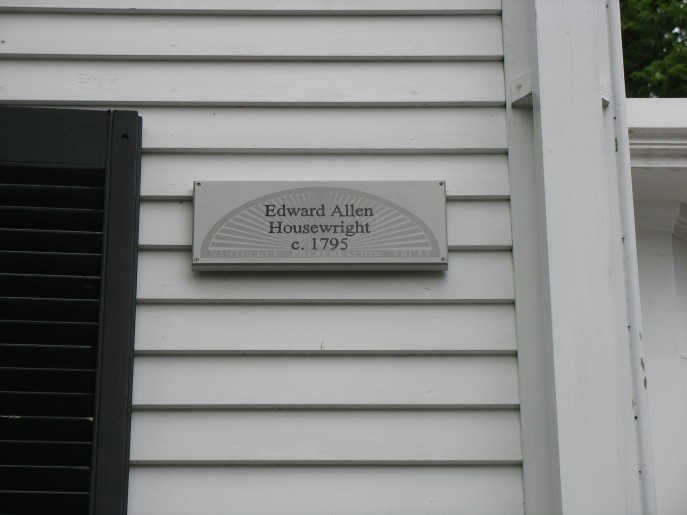 NPT House Marker program provides passersby with an opportunity to learn more about a historic building; photo by Michael May
NPT House Marker program provides passersby with an opportunity to learn more about a historic building; photo by Michael May
Gutting a historic house on Nantucket is never the answer, and is a poor investment decision, besides being unethical because gutting steals history from future generations. Let the historic qualities of a house shine, use a “light touch,” and highlight the elements that make your house special. Ask questions and find contractors who understand the need to treat your old house in a proper manner. If you do, it will increase in value and you will help ensure the future of the architectural heritage of this special place for generations to come.
Here are some tips to consider before starting a restoration project.
Restoring a historic building can be a challenge. It is often difficult to know where to begin and who to turn to for assistance and advice. The Nantucket Preservation Trust is available to meet with you and to help guide you in the process.
Consider the big picture. Why undertake a restoration project at this time? For many people, the answer is that new mechanicals or kitchen/baths are desired or the house is a new purchase and updating is necessary. As a steward of an island resource you will need to accomplish your goals while protecting and enhancing your home’s historic elements.
Learn about your home’s history and architecture. Before you begin the work, learn more about your house. Every house has a story to tell—not just who built it and who owned it or lived in it over the years, but how the house evolved gradually over time to meet the needs of succeeding owners. Understanding the architectural evolution of the house and its history is key to proper restoration. The NPT can help you learn more with a simple walk-through to point out original historic elements and changes, and/or with a detailed house history.
Hire an architect, contractor and other experts who understand your needs and the importance of retaining historic fabric. Communicating your desire to retain the historic feel of your property is essential. A talented and sensitive architect/contractor also can help steer you through a more challenging—and interesting—effort to preserve your home’s character while at the same time make needed repairs and improvements.
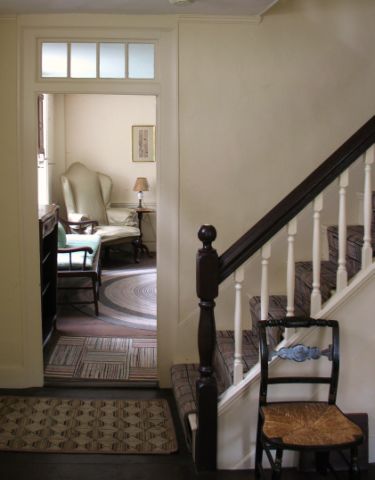
Original features, such as the transom and staircase with mortgage button should be maintained; photo by Michael May
Limit the scope of repairs. Keep original details. Don’t over-restore. Your philosophy toward restoring your home should be, like that of a physician, “first, do no harm.” Although some historic elements may need attention, avoid unnecessary repairs and over-finishing. Replace only the portion of elements that are damaged. Replications of molding profiles and other elements will help retain your building’s historic character. Keep old wood as much as possible. New wood will not wear like the original, which is denser and will continue to perform well as long as any rotten sections are repaired.
Retain the historic plan and features. The historic layout should be retained whenever possible. New kitchen and baths should be added in areas that cause the least amount of damage to original fabric. Defining elements should be retained and can include transoms (that small band of windowpanes above doorways); paneled doors with old hardware; mantels; ceiling medallions; and moldings around doorways and windows, where walls meet ceilings, picture moldings, and chair rails. Other important Nantucket features such as old mirror boards (moldings or woodwork between windows) also should be retained. Keep the winder staircases, which have served houses on Nantucket for centuries and are beautifully constructed. If new stairs are required, consider adding straight-run stairs in new additions or areas outside the historic core. Be cautious in the removable of wings and other elements; rear ells may be original and are often important to the historic character of the house and surrounding neighborhood.
Keep the plaster walls. In the past, plaster was routinely torn out—even by well-meaning preservationists—to make it easier to install new mechanical systems and wiring. But grouping those components and snaking them through the walls can be accomplished. Plaster is far superior to modern drywall since it isn’t ruined if it gets wet. It also provides excellent soundproofing, and can be patch-repaired.
Take special care with your wood floors. Many people want to retain the old floors in a historic house, but there is a right way—and a wrong way—to restore them. Old flooring is often over-sanded, reducing the floor’s life span and at the same time destroying its antique character. Old floors were hand-planed, and gentle hand-sanding or chemical removable of paint and finishes is the best way to protect them. Simple cleaning and waxing will retain the old patina, too.
Maintain the quirks. Straighten that crooked window or doorway? Not necessarily. Treasure the things that show evidence of how your house evolved over the generations. Your house will be more charming and authentic as a result—and yes valuable. It is possible to make structural repairs and still keep those elements that give the house a real Nantucket sense of place.
Restore—don’t replace—historic windows. Windows are key elements of old houses. Old windows were made to be repaired, not replaced. Almost all pre-1940 window frames were built of high-quality, dense wood in easy-to-assemble parts. Maintenance of old windows generally involves keeping them painted and in good working order. Old windows can easily be made energy efficient by adding sensitive storm windows and weather stripping.
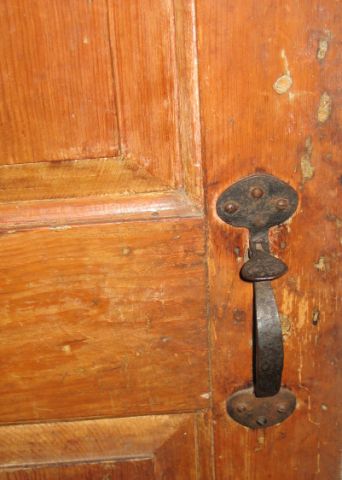
Photo by Michael May
Take special care in repairing masonry. Portland cement is usually not compatible with historic brick, and its use can lead to structural damage and moisture problems that can spread to other areas. Of particular concern on Nantucket are chimneys that have been lined or repointed with cement. The weight of cement can bring down an old chimney and lead to very costly repairs. Repointing mortar with the correct lime mortar–cement ratio is essential and should not increase the expense. Hire a mason who understands the importance of matching the mortar to the old brick.
Build new wings “with Nantucket in Mind.” Design any new addition so it is fully compatible with the main core and does not overwhelm it. Oversized additions can negatively affect the streetscape. Read Building With Nantucket in Mind, the architectural design guidelines produced by the Nantucket Historic District Commission.
Complete maintenance on a regular basis. Routine maintenance, such as proper paint preparation, will help minimize rot and the need for costly repairs. Maintenance on Nantucket is especially important because of the sea air and damp winters. Address suspected water problems or other issues early to minimize damage
Guest Blogger Michael May is the executive director of the Nantucket Preservation Trust.







 NPT House Marker program provides passersby with an opportunity to learn more about a historic building; photo by Michael May
NPT House Marker program provides passersby with an opportunity to learn more about a historic building; photo by Michael May

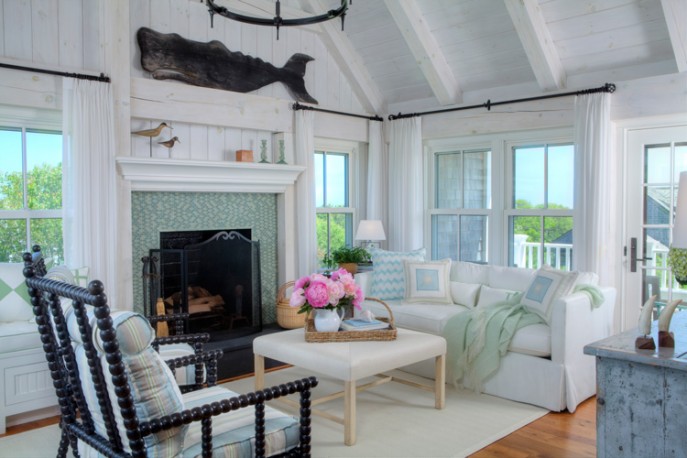
 An “upside down” house, in traditional island style, is one in which the living areas and master bedroom are on the second floor, in order to take advantage of stunning water views best seen from a higher vantage point. This secluded home has a beachy charm overlaid with elegance, where precious antiques and original artwork are blended with personal mementos. The dining table above is an antique lacemaker’s table, surrounded by a set of painted 19th century chairs.
An “upside down” house, in traditional island style, is one in which the living areas and master bedroom are on the second floor, in order to take advantage of stunning water views best seen from a higher vantage point. This secluded home has a beachy charm overlaid with elegance, where precious antiques and original artwork are blended with personal mementos. The dining table above is an antique lacemaker’s table, surrounded by a set of painted 19th century chairs.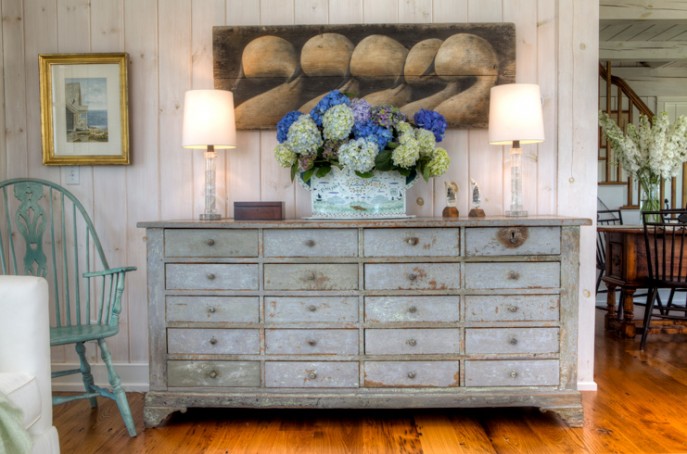 This Swedish Apothecary chest is one of the unexpected treasures found throughout the home. Although its owners are challenged to fill every one of the twenty drawers, we knew it would be perfect here. We re-envisioned the space for this striking piece!
This Swedish Apothecary chest is one of the unexpected treasures found throughout the home. Although its owners are challenged to fill every one of the twenty drawers, we knew it would be perfect here. We re-envisioned the space for this striking piece!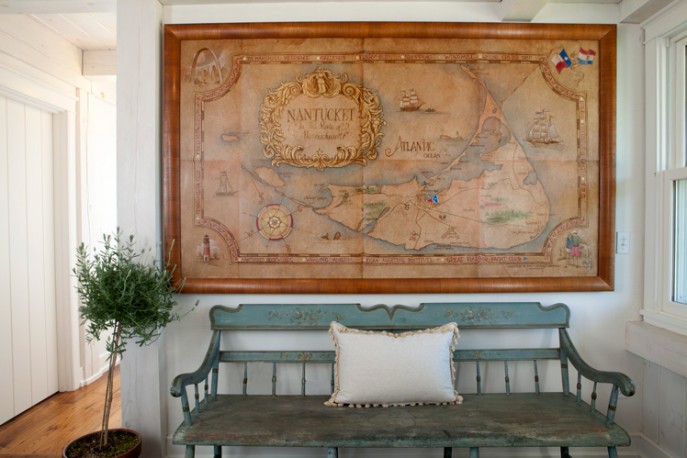 Unusual artwork that doubles as a conversation starter works beautifully in an entry way, when guests are being welcomed. Their first view of the home should be an enticing one, promising equally interesting and elegant rooms to come. Created for Dujardin Design by artist Christian Thee to suggest a pirate’s treasure map, the couple’s favorite spots on the island are pinpointed: the basket museum, the Great Harbor Yacht Club, and the airport where they joyfully make their island arrival.
Unusual artwork that doubles as a conversation starter works beautifully in an entry way, when guests are being welcomed. Their first view of the home should be an enticing one, promising equally interesting and elegant rooms to come. Created for Dujardin Design by artist Christian Thee to suggest a pirate’s treasure map, the couple’s favorite spots on the island are pinpointed: the basket museum, the Great Harbor Yacht Club, and the airport where they joyfully make their island arrival.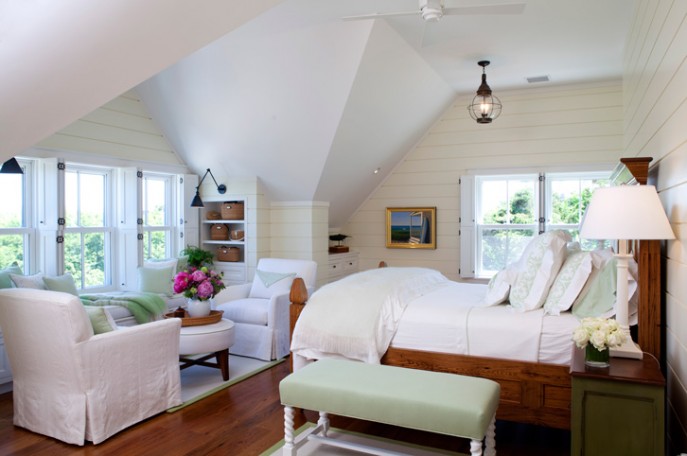
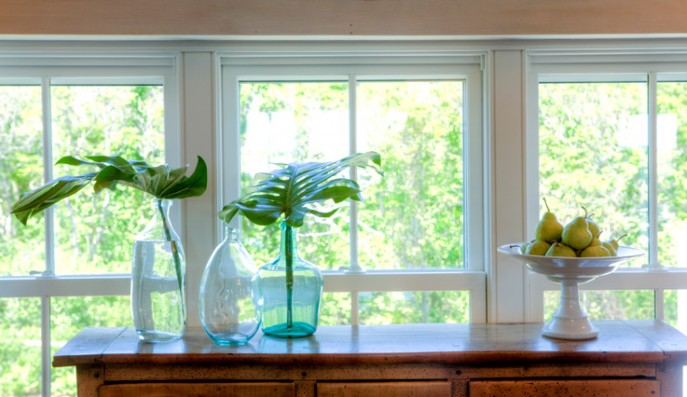
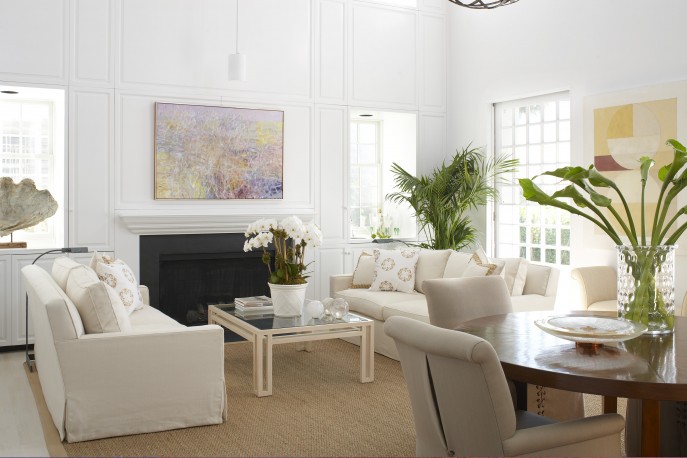



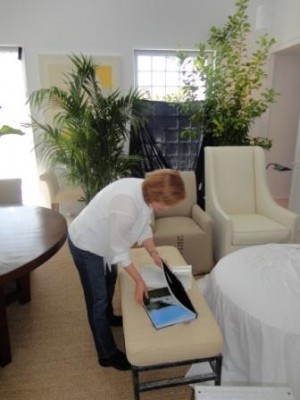

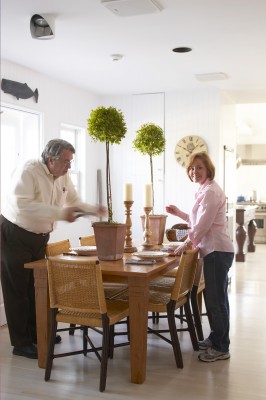

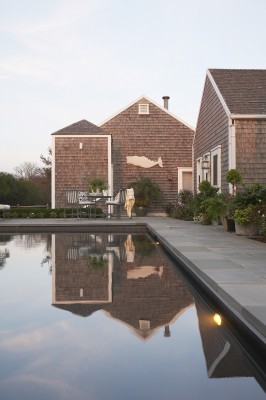

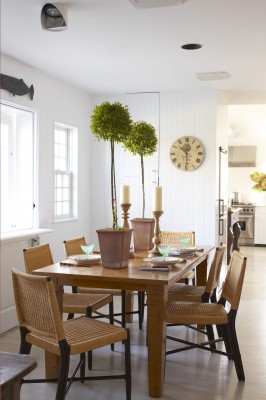
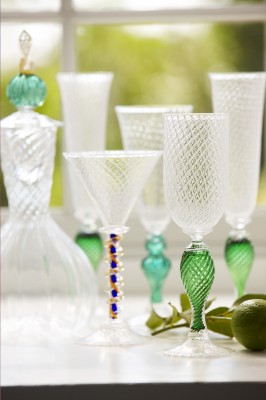
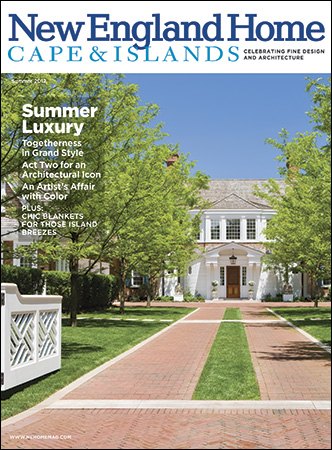
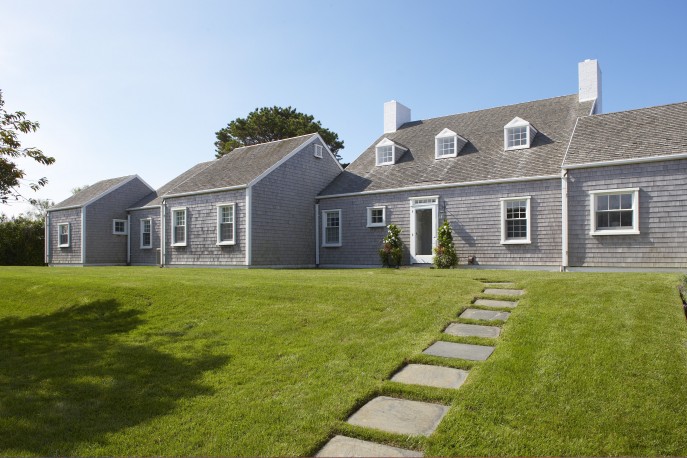
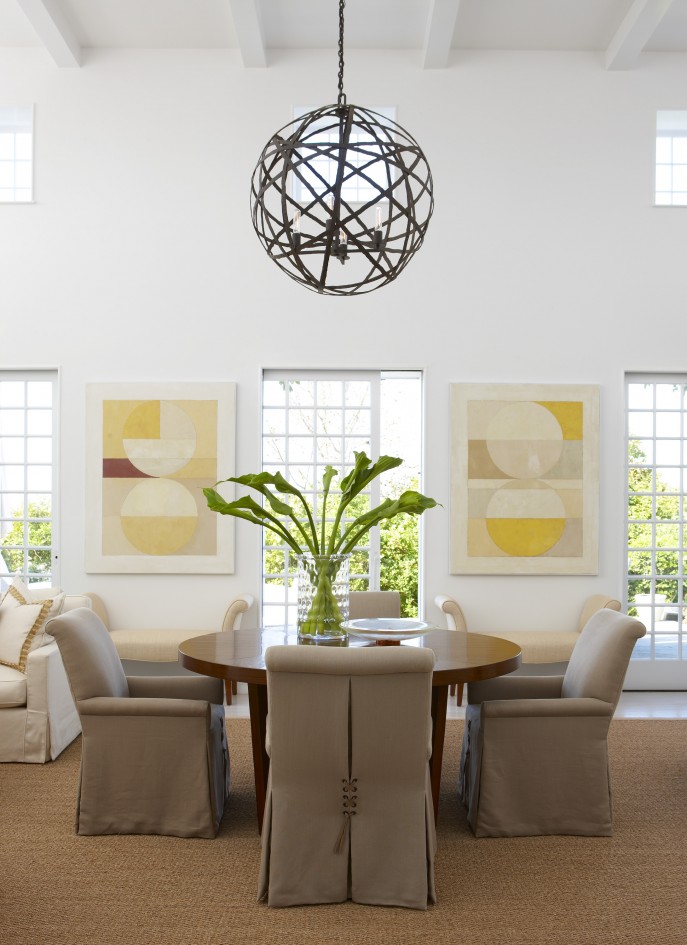
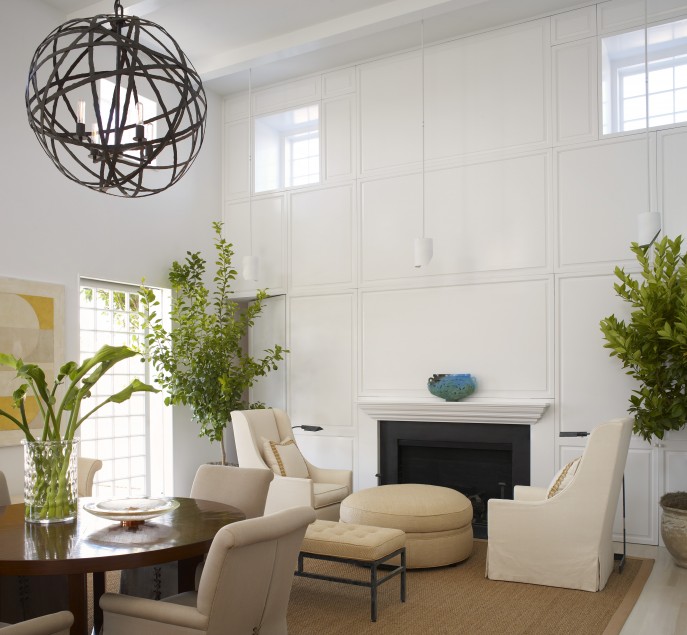
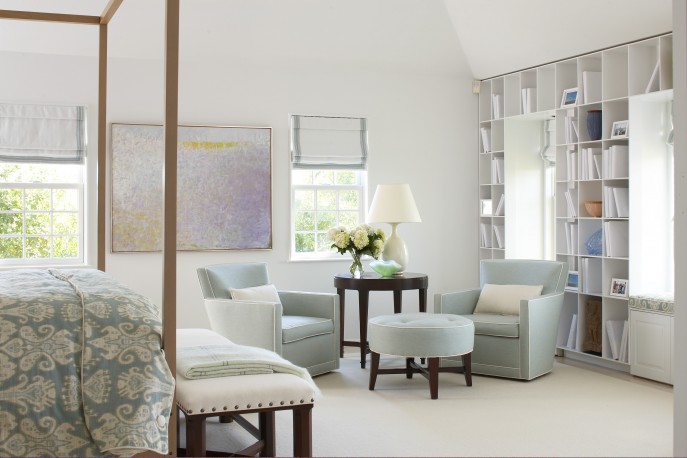





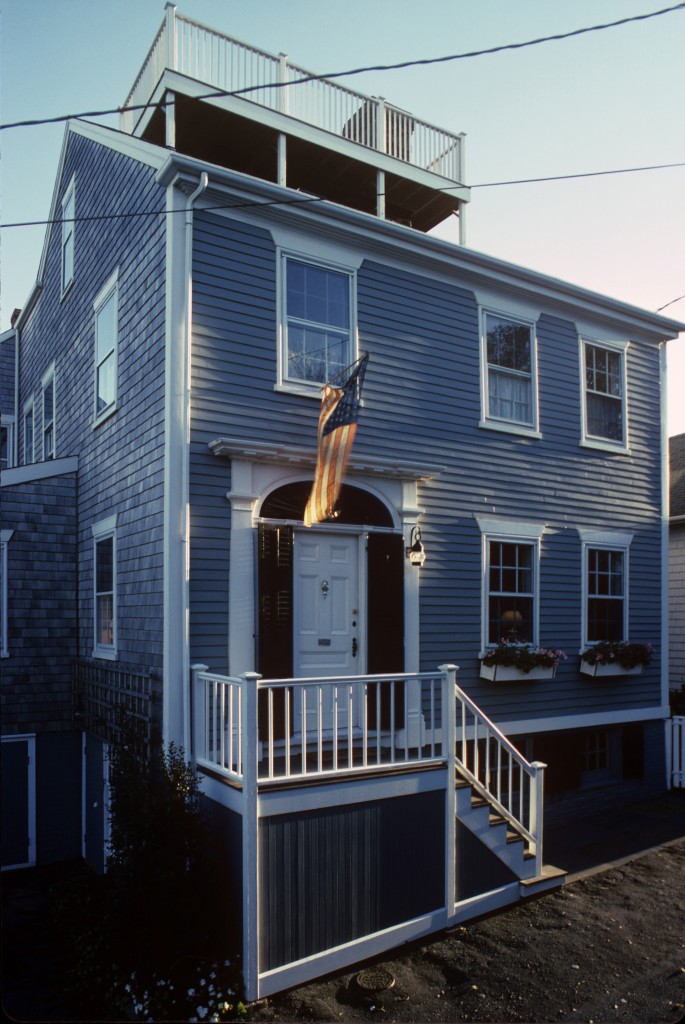
 I’m delighted that my summer home on Nantucket is featured in the April issue of Traditional Home Magazine, on stands now. My husband Frank and I fell in love with this older home in Madaket, near the most beautiful beach on the island, and began a renovation project to make this house perfect for relaxed summer living. I consider it a blessing to live in a house that’s just big enough: big enough to invite friends and family to join us for lazy weekends, and small enough to be manageable. I call it my new “cottage living” phase of life.
I’m delighted that my summer home on Nantucket is featured in the April issue of Traditional Home Magazine, on stands now. My husband Frank and I fell in love with this older home in Madaket, near the most beautiful beach on the island, and began a renovation project to make this house perfect for relaxed summer living. I consider it a blessing to live in a house that’s just big enough: big enough to invite friends and family to join us for lazy weekends, and small enough to be manageable. I call it my new “cottage living” phase of life.
